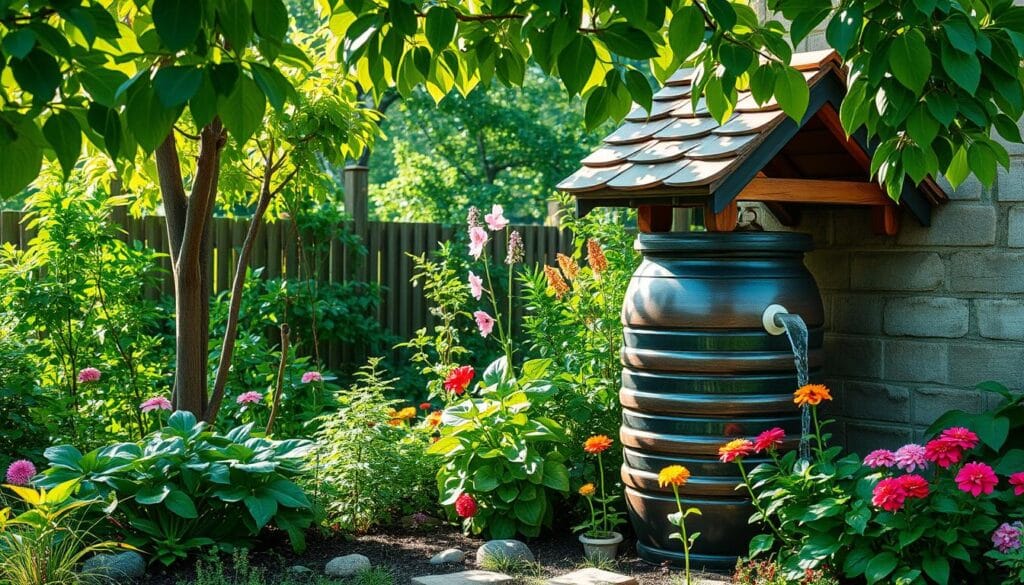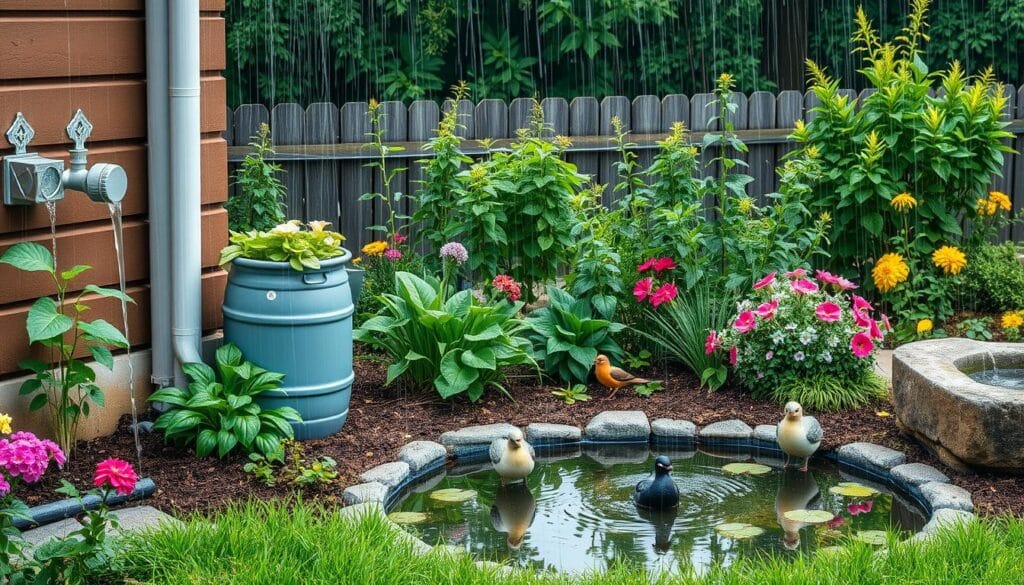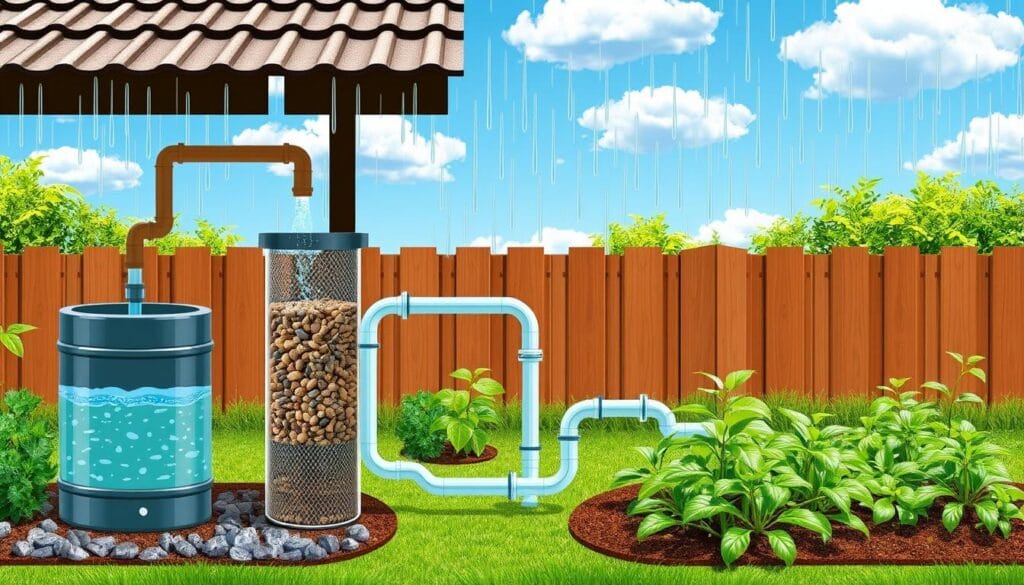LuxioHome
Welcome to Luxiohome — where your dream space becomes reality.
LuxioHome
Welcome to Luxiohome — where your dream space becomes reality.

Explore innovative Rainwater Harvesting Systems to create an eco-friendly garden. Conserve water and enjoy sustainable living with smart solutions.

Rainwater harvesting systems are smart and green ways to save water for gardens. They catch and store rainwater for many uses, especially in gardening. As more folks choose eco-friendly garden options, these systems are getting more popular.
They help save water, cut down on using city water, and help the environment. By using rainwater systems, homeowners can better care for their gardens. This also helps the planet, making sure plants and the environment do well.
Rainwater harvesting is a simple way to collect and use rainwater. It’s great for watering plants and meeting household needs. This method helps use water more efficiently and cuts down on the need for city water.
Rainwater harvesting collects rainwater from roofs and paved areas. It stores this water for use in gardens and more. This method is good for both city and country areas, saving water and making people more self-sufficient.
Practices like rainwater harvesting are key to saving water. They help keep natural resources safe, support different species, and keep ecosystems healthy. By using these methods, we help make our planet a better place for all living things.

Using rainwater harvesting systems has many advantages. They help both those who care about the environment and those who want to save money. These systems make gardening more sustainable in several ways.
One big plus of rainwater harvesting is saving water. Gardeners can use less water from local sources. This is especially helpful during dry times.
Using rainwater helps plants grow well. It also keeps ecosystems healthy.
Harvesting rainwater can also cut down on water bills. Instead of using expensive city water, you can use rainwater. This saves money every month.
It’s a smart way to garden on a budget. It helps families save money while being green.
Rainwater is soft and free from harmful chemicals. Using it makes plants healthier. Healthy plants grow better and fight off pests and diseases.

Rainwater harvesting systems need several key parts to work well. These parts help collect and use rainwater efficiently. Knowing about these parts helps gardeners save water and keep their plants healthy.
Storage tanks are key in rainwater harvesting systems. They hold the rainwater for irrigation and other uses. You can choose from plastic, concrete, or metal tanks, each with its own benefits.
Choosing the right tank for your garden is important. It ensures your system works its best.
Gutters are essential for directing rainwater to storage tanks. They must be installed and kept clean for good water collection. Downspouts guide the water flow, helping to avoid overflow.
Any blockage in gutters can lower the system’s effectiveness. So, it’s important to keep them clear.
Filtration systems keep the rainwater clean. They remove debris and pollutants, making the water safe for plants. A good filtration system also helps storage tanks last longer by preventing corrosion.
Knowing about different filtration systems can make your system more efficient. It’s a key part of keeping your rainwater harvesting system running well.

To start using rainwater in your garden, follow a few key steps. First, figure out what your garden needs. This means looking at how much rain you get, your garden’s size, and the plants you have. Knowing this helps you decide how much water you can collect and use.
Every garden is different, so it’s important to understand its needs. Look at how much rain falls in your area throughout the year. Also, know which plants need more water. This info helps you design a system that works well for your garden.
When picking a rainwater system, think about your budget, space, and how much water you need. You can choose from simple barrels to complex underground tanks. Make sure the system looks good in your garden and meets your water needs.
Follow local rules when installing your system to make sure it works right. Important steps include making sure gutters slope to the tank, sealing all connections, and adding filters to keep water clean. Doing these things well will help your system last a long time.